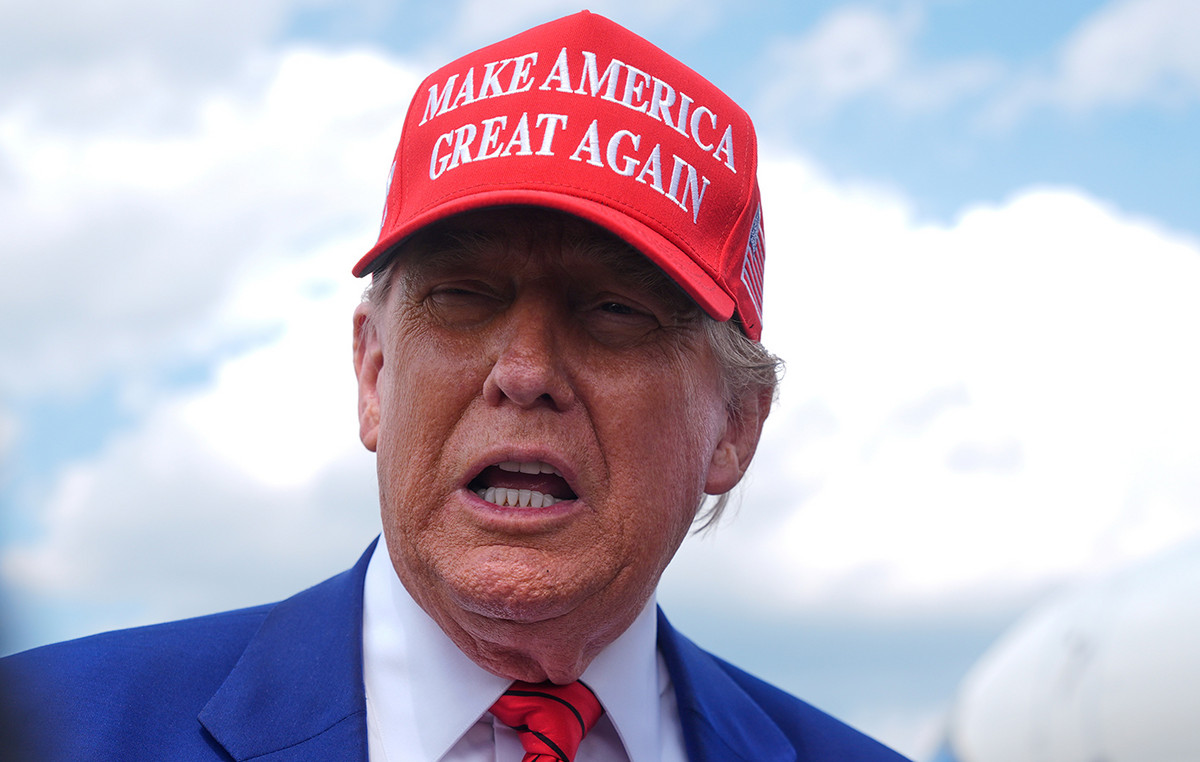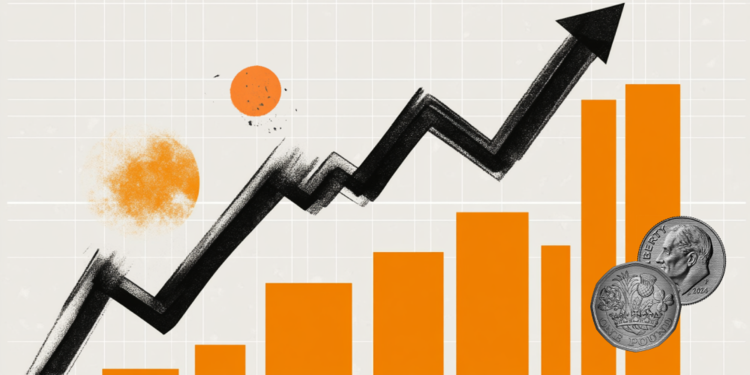By Eleftherias Kourtalis
The markets are back on an upward trajectory, which is reinforced by the expectations that the central banks will now relax their aggressive attitude towards interest rate increases, however the risk of recession is already knocking on the door of the economy, especially in the Eurozone, and so after the relief, reflection, worries and fears will return.
Analysts advise investors not to get carried away by this… change of mood in the markets for the better, noting that they must be particularly cautious about the continuation, since the geopolitical and macroeconomic situation leave no room for complacency for the coming winter. The causes that have led the global economic system to its current predicament have not changed, and no one can guarantee when they will be eliminated, nor that they will not worsen.
Over 500 economists see a strong chance of a recession
According to a Reuters poll of more than 500 international analysts and economists, the global economy is already mired in a severe slowdown, with some major economies at high risk of recession and only a slight easing of high inflation expected next year.
Most central banks are in the middle of an aggressive cycle of rate hikes as many policymakers try to correct a collective mistake made during last year’s crisis in believing that supply chain-related inflationary pressures would not last and they are temporary. This entails another risk – central banks move too quickly, not taking time to assess the damage from faster rate hikes after a decade of near-zero interest rates.
Galloping inflation has caused an acute cost-of-living crisis in much of the world, raising risks of recession. According to Reuters calculations, there is already an average 40% chance of a recession in the world’s largest economy next year, the US, while the chance is even higher for the Eurozone and Britain, with economists putting it at 50% and up.
“Recession dynamics are increasingly evident in our forecasts. In particular, we now see several major economies – including the United States and the euro area – slipping into recession. Even so, when that will happen varies and is expected to be relatively mild,” notes Nathan Sheets, chief global economist at Citi. “By all measures, however, the global economy is slowing and the outlook is worsening. A global recession is, without question, a clear and present risk.”
According to more than 500 analysts and economists, global growth is forecast to slow to 3.0% this year, followed by 2.8% growth next year.
The IMF revised downwards its global growth forecast for the third time this year, warning that risks from high inflation and the war in Ukraine could push the global economy to the brink of recession if left unchecked. Global GDP growth will slow to 3.2% in 2022, from the IMF’s previous forecast of 3.6% in April, while in 2023 it will move to 2.9%, from 3.6% forecast before. “The outlook has worsened significantly since April. The world may soon be on the brink of recession, just two years after the previous recession,” IMF chief economist Pierre-Olivier Gourinchas commented. For the US the IMF sees growth of 2.3% in 2022, slowing to 1.0% in 2023 (from 3.7% and 2.3%, respectively, previously), while for the Eurozone it also cut its forecasts to 2.6% in 2022, from 2.8% in April, due to a rally in inflation, with a further slowdown in 2023 to 1.2%.
Goldman Sachs, Citi, JP Morgan: The Eurozone is clearly in recession
Goldman Sachs’ new baseline scenario is for a technical recession in the Eurozone with a contraction of -0.1% in the third quarter and -0.2% in the fourth quarter (not annualized) before growth returns in the first quarter of 2023. Among countries, Germany and Italy will clearly be in recession in the second half, while Spain and France continue to grow. Risks of a deeper recession exist in the event of even more severe disruptions to natural gas flows, new pressures on government bonds or a US recession.
The possibility of a recession in Europe is becoming increasingly clear, as Citigroup also notes. Russia has cut gas flows back to 20% of capacity as it continues to leverage natural gas in its diplomatic standoff with the European Union, and this will push Europe deeper into recession, he explains. “As plans are agreed to implement a winter energy pass, we expect the deterioration of financial conditions in Europe to cause a much worse reaction in the real economy. Winter is already knocking on Europe’s door,” he notes characteristically, adding that the impact on the German and Italian economy from the application of the card is the deduction of 1%-2% from the GDP, while for the whole of the Eurozone it is placed at least 1.5%.
The looming crisis in natural gas supplies in the Eurozone combined with the political crisis in Italy will lead the region to a mild recession early next year and force the ECB to limit rate hikes, warns JP Morgan. The bank’s economists cut their forecast for Eurozone growth to 0.5% in the third quarter, while in the fourth quarter of 2022 and the first quarter of 2023 they expect it to contract by 0.5%.
“Our new forecasts are based on the assumption that the price of natural gas will move to 150 euros/MWh”, notes JPM, adding that this development combined with the problems in Italy will bring a blow of up to 2% to the GDP of the Eurozone .
JP Morgan, meanwhile, predicts that high gas prices will push inflation 1.2% higher in the near term, although it will ease again next year due to a negative market reaction and a slowdown in the pace of interest rate increases from the ECB.
“A lot of pain is expected going forward, especially in the second half of the year. This crisis will worsen unless supply-driven inflation comes down,” says Erik-Jan van Harn, Rabobank strategist. For example, Germany, Europe’s largest economy, is grappling with severe cuts in gas supplies from Russia due to Western sanctions imposed on Moscow over its invasion of Ukraine, and is preparing for a difficult winter, he said.
How long will the bear market last?
Expectations that the Fed will end rate hikes helped stocks move higher last week, with nearly two-thirds of investors now believing the Fed rate will be at 3.5% or lower by March 2023 , up from just a third a month ago.
Hopes of the Fed holding off on rate hikes could be dashed if consumer prices remain stubbornly high in the coming weeks – repeating a scenario that has dragged stocks lower this year, BlackRock strategists say.
“Inflation data could surprise to the upside – and force markets to quickly price in a path to higher interest rates once again. Result: another sell-off in stocks,” they point out.
Data from the Wells Fargo Investment Institute showed that the depth of the current bear market – which has seen the S&P 500 fall as much as 23.6% from January highs – may depend on whether the economy is in recession. Bear markets accompanied by recessions lasted an average of 18 months, during which stocks fell an average of 35.8%. Without a recession, bear markets have lasted an average of 5.9 months with an average decline of 27.9%, the bank’s data showed.
Morgan Stanley: Don’t get carried away by rising markets
Morgan Stanley advises investors to resist the markets’ latest rally after the Fed announcements. The bank’s chief strategist, Mike Wilson, noted on CNBC that Wall Street’s enthusiasm for the idea that rate hikes may slow sooner than expected is premature and problematic.
“The market always goes up when the Fed stops tightening and until the recession starts. But it is unlikely that there will be a big gap this time between the end of tightening and the recession,” he stressed, while warning that “ultimately, this will be a trap”.
According to Wilson, the most pressing issues are the effect the economic slowdown will have on corporate earnings and the risk of the Fed tightening too much. “The market was a bit stronger than expected given that growth signals were consistently negative,” he said. “Even the bond market is now starting to appreciate the fact that the Fed will probably go too far with tightening and lead us into a recession.”
Wilson has a year-end target of 3,900 points for the S&P 500, one of the lowest on Wall Street. This represents a further 3% decline from current levels and a total decline of 19% from January’s highs. His forecast also includes an estimate that the market will move lower, below the 52-week low of 3,636 points, before reaching the year-end target.
“We’re nearing the end. I mean this bear market is going to continue for a while,” Wilson said, noting that he doesn’t think June’s lows will be Wall Street’s lows for the year. In fact, in a (possible) recession scenario, the S&P is expected to see even 3,000 points.
Goldman Sachs: Don’t be fooled by the recent rebound in stocks
Goldman Sachs is sending a similar message. Despite the recent uptrend in stocks, the American bank believes that risks continue to be underestimated and, thus, maintains “defense” in its portfolio and recommends a neutral stance on stocks and bonds in general, while it estimates that the positions in cash is the most appropriate strategy. At the same time, it also maintains its negative attitude towards European shares, where it foresees a further plunge of 7.5% in a three-month horizon.
The past few days have been a barrage of news, with Nord Stream 1 flows only partially restored, while macroeconomic data surprised on the downside, with Eurozone PMIs dipping into contractionary territory and the US manufacturing index moving at levels well below expectations. In addition, the ECB moved more aggressively, raising key interest rates by 50 basis points, while President Draghi’s resignation sparked a political crisis in Italy. Added to these were announcements from the Fed after the new 75bp increase, with the Central Bank acknowledging that “at some point” it would be appropriate to slow the pace of increases.
Markets took the bad news pretty well, with stocks extending the rally that began in mid-June, paring some of their year-to-date losses, the US bank said. Due to much weaker economic activity data, markets have turned cooler on central bank moves.
However, GS estimates that the upward trend will not continue. “At this stage, we do not recommend that investors shift to cyclical assets, as we believe markets are underestimating the risks of continued inflationary pressures, which will keep central banks on a tighter pace for longer,” he notes. Its economists expect a continuation of the rate hike cycle in both Europe and the US.
Also, the American bank estimates that earnings revisions will become more negative, at a time when the profitability of European companies has disappointed for the first time since the pandemic crisis.
Source: Capital
I am Sophia william, author of World Stock Market. I have a degree in journalism from the University of Missouri and I have worked as a reporter for several news websites. I have a passion for writing and informing people about the latest news and events happening in the world. I strive to be accurate and unbiased in my reporting, and I hope to provide readers with valuable information that they can use to make informed decisions.







